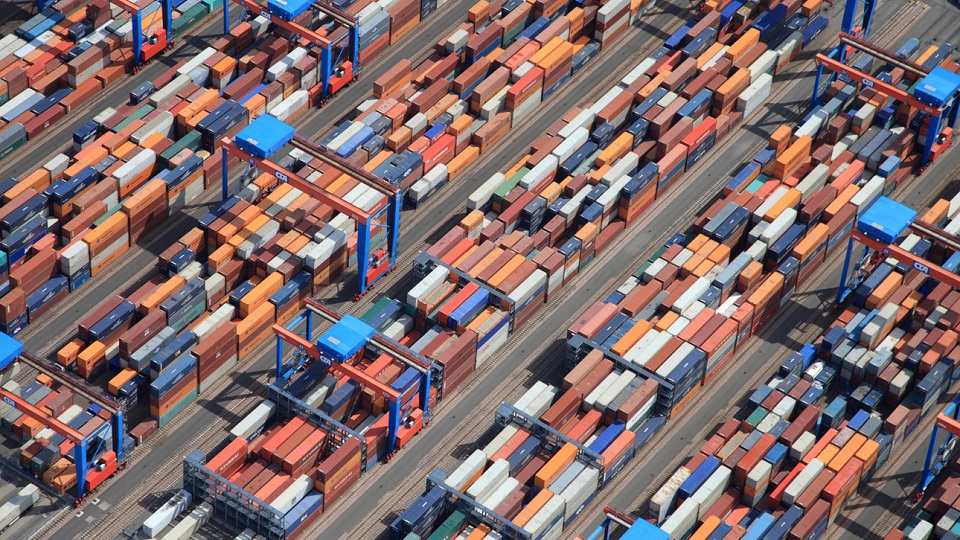Container rates finally return to normal after Chinese Spring Festival

After continued price increases of rail freight between China and Europe, rates are finally returning back to normal levels. In some cases, the freight rates of some routes were even comparable to those of ocean freight. The turning point was the Chinese Spring Festival, which comes with a 3-4 week shut down of production in China. This restored the container availability to some extent, and consequently the container rates.
“Trade traditionally slows down in China for an extended period during and after the Chinese New Year holidays as factory workers travel to visit families and output drops. Most data suggest Covid travel restrictions and high demand for exports meant that many factories continued operations. But it seems the drop off in output, even if less than normal, was enough to allow the container supply/demand imbalance to reduce”, said Johannes Schlingmeier, CEO of the container leasing and trading platform Container xChange.
Reasons for price reduction
The Spring Festival is always the reason for less export to Europe, and hence a more balanced east- and westbound flow of traffic, as the eastbound flows are still dominating. But this year, it was not so much a pause button for the industry, but rather a buffer at the right time. Last year, under the influence of the epidemic, the imbalance of east-west cargo volume intensified, resulting in an extreme shortage of domestic containers, and dramatic freight rate increases.
In addition, the dropping rates of rail freight is not unrelated to the declining rates of ocean freight. Last week, China’s export ocean freight rates dropped overall. According to data from the Baltic Shipping Exchange (FBX), the freight rate on the China-Europe route once fell by more than US$400. Although the freight rate after the price cut is still high compared to previous years, this seasonal drop is enough to set off a gamechange in shipping and railway transportation.
Mike Liu from CMC Logistics explained at the end of February: “With the decline in shipping prices expected in March and April, some customers that shifted their loads to rail will re-opt for shipping, and the demand for railways will be relatively reduced.”
The price cut is temporary
The general price reduction after the holiday is the carrier’s last resort to respond to changes in market demand. After the platform company cuts the price, the freight forwarders who hold the right to book may also drop their rates, in order to attract the limited supply of goods in the market.
But this is undoubtedly a good time for some customers who want to transport low-value goods. “Last year, due to high freight rates, these customers were unable to ship their goods to the European market, and all their goods are piled up in warehouses in China. They have been waiting for the freight rate to drop” ,Bartosz Miszkiewicz, chairman of the board of Polish freight forwarding company Symlog explained.
Temporary price drop
However, the price drop is only temporary, is what experts believe. “Such price cuts will not last long, and they will probably pick up by the end of March. Generally speaking, rail freight prices will rise this year,” said an insider in the industry. This optimistic estimate is not blind self-confidence. Facts have proven that even after experiencing delays and congestion, the popularity of the China-Europe Express in the market is still very high. As Bartosz said: “Last year changed everything. Due to the high timeliness and reliability of the railway, customers who came from the sea now have more trust in us and choose to continue using rail.”
What should not be ignored, is that most European countries are currently still in lockdown. However, it is expected that this will gradually change this summer, and the consumer market will gradually recover. This should result in a new peak of demand for freight between China and Europe.
By then, the China-Europe freight train may face a new round of price increases. However, after learning from the past, the industry has made a lot of progress in container circulation and new line expansion, which may avoid price inflations and stabilise the freight rate within a acceptable range.
This article is partly a translation of this article on RailFreight.cn.
Also read:
‘Even with the delays, people still want to book a train to Europe’
You just read one of our premium articles free of charge
Want full access? Take advantage of our exclusive offer







I’m inspired by your articles. You have shared very valuable information and knowledge that people should recognize. Thank you for sharing. I would love to see more updates from you.
http://www.slrshipping.com